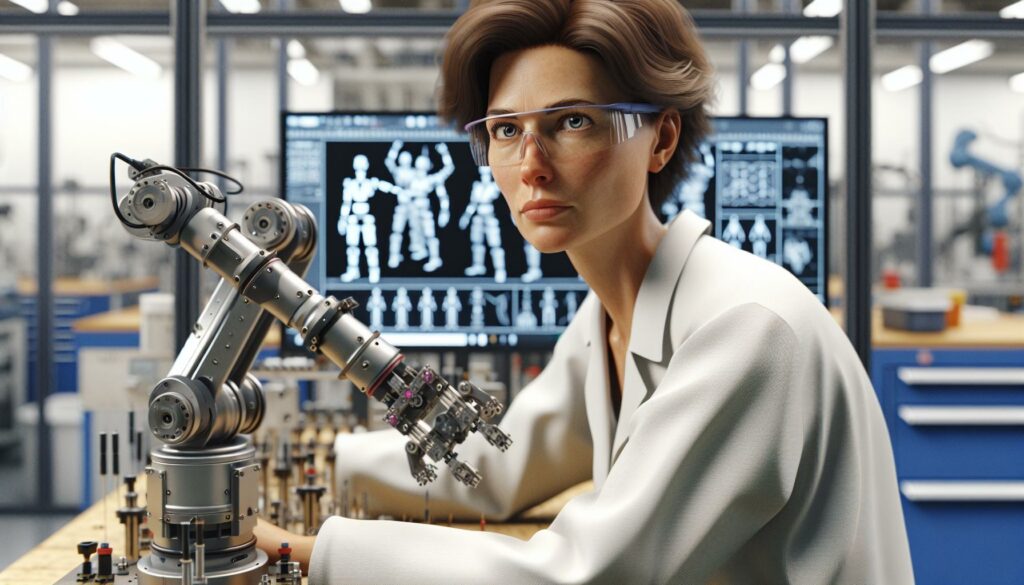In a world where technology evolves at a breakneck pace, the role of a robotics engineer stands at the forefront of innovation. These experts are the architects behind the machines that transform industries, from manufacturing to healthcare. With a blend of creativity and technical prowess, robotics engineers design, build, and maintain robots that solve complex problems and streamline processes.
I’ve always been fascinated by how robotics engineers merge science and imagination to create functional marvels. Their job isn’t just about programming and assembling; it’s about envisioning the future and making it a reality. As the demand for automation grows, understanding the intricacies of this role becomes essential for anyone looking to dive into the tech world or simply stay informed about where our world is heading. Let’s explore what makes this career both challenging and rewarding, and why it’s becoming a cornerstone of modern industry.
Key Takeaways
- Robotics engineers are pivotal in driving technological innovation, designing, building, and maintaining robots across various industries including manufacturing and healthcare.
- Essential skills for robotics engineers include a blend of technical expertise in computer science, mechanical engineering, electronics, and proficiency in programming languages like Python and C++.
- Key responsibilities of a robotics engineer include designing blueprints, testing prototypes, and ensuring quality assurance through rigorous assessments and maintenance schedules.
- Career opportunities in robotics engineering are diverse, ranging from entry-level roles to specialized positions and project management, with advancements often requiring continual learning and skill enhancement.
- The field faces challenges such as rapid technological advancements and ethical considerations, necessitating comprehensive strategies to manage integration and security effectively.
- Robotics engineers significantly impact industries by automating processes, enhancing capabilities, and meeting the growing demand for innovative solutions, particularly in sectors like manufacturing and healthcare.
Overview Of Robotics Engineer
A robotics engineer’s role involves designing, creating, and testing robotic systems. These engineers work in diverse industries such as automotive, aerospace, and defense. To begin with, they design blueprints and develop the software necessary for robots to perform specific tasks. Once the design phase is complete, engineers then handle the building and testing of prototypes.
Skills in mechanical engineering, electronics, and computer science are essential. An example involves the integration of sensors, actuators, and control systems. Working collaboratively, they often team up with software developers and mechanical designers to ensure the robots meet functional requirements.
Problem-solving plays a critical part in a robotics engineer’s job. Engineers regularly address challenges related to efficiency, reliability, and cost-effectiveness. Continuous learning is vital in this field due to the rapid advances in technology.
Key Responsibilities


Robotics engineers play a crucial role in shaping the future through innovative design and meticulous execution. Their work involves a series of vital responsibilities that ensure the seamless functionality and improvements of robotic systems.
Designing And Prototyping Robots
I develop precise blueprints for robotic systems, outlining design specifications. Using computer-aided design (CAD) software, I visualize and refine concepts. In prototyping, I construct models to test hypotheses, ensuring alignment with project goals. Close collaboration with mechanical designers and software developers often enhances the process, integrating diverse expertise to create cohesive designs.
Testing And Quality Assurance
Testing prototypes ensures robots meet strict operational standards. I conduct rigorous assessments, analyzing performance and addressing any deviations. Quality assurance involves establishing benchmarks that guide evaluations. I meticulously document test results, using data to refine systems. My goal is to ensure each robot operates reliably and efficiently in real-world applications.
Maintenance And Upgrades
Ensuring peak robotic performance demands ongoing maintenance and timely upgrades. I develop and implement maintenance schedules to prevent system failures. Identifying areas for improvement, I incorporate cutting-edge technologies and methodologies. Keeping abreast of technological advances allows me to offer robots increased capabilities, enhancing their functionality and value within various industries.
Required Skills And Qualifications


In the dynamic field of robotics engineering, a distinct set of skills and qualifications sets apart successful engineers. These skills encompass both technical and soft capabilities.
Technical Skills
A robust foundation in computer science, mechanical engineering, and electronics is essential. Proficiency in programming languages such as Python, C++, and Java enables engineers to develop complex algorithms and control systems. Familiarity with CAD software helps visualize and design intricate robotic systems. Knowledge of microcontrollers and PLCs (Programmable Logic Controllers) enhances the development and integration of automation solutions. Understanding of control system theory and kinematics is crucial for designing and implementing effective movement and control mechanisms in robots. Engineers often need expertise in embedded systems to ensure seamless hardware and software integration.
Soft Skills
Problem-solving abilities are critical for identifying efficient solutions and overcoming engineering challenges. Strong analytical skills aid in breaking down complex problems and devising effective strategies. Excellent communication skills facilitate collaboration with multidisciplinary teams, conveying technical information clearly. Adaptability in learning new technologies is necessary due to rapid advancements in the field. Engineers also benefit from project management skills to oversee the timeline and budget effectively, ensuring project milestones are met with precision. Attention to detail guarantees the accuracy needed in both design and implementation phases.
Career Path And Opportunities


A career as a robotics engineer opens diverse paths and opportunities. Whether one is just starting or looking to specialize further, this field offers numerous roles and avenues for professional growth.
Entry-Level Roles
In entry-level roles, I engage with foundational tasks in robotics engineering. Responsibilities often include designing, testing, and building basic robotic components. Junior positions frequently involve collaboration with senior engineers to develop prototypes and refine system designs. Skills like programming in languages such as Python and C++, and familiarity with CAD software are crucial. Entry-level engineers are typically expected to troubleshoot systems, implement technical adjustments, and document results, laying the groundwork for more advanced responsibilities.
Advancement And Specialization
Advancement in robotics engineering involves moving into specialized roles or project management positions. I can focus on niches such as robotics software development, hardware design, or artificial intelligence integration. Specialization might also lead to roles in research and development or applied fields like healthcare robotics. As I gain experience, opportunities to lead projects or departments increase. Pursuing certifications or advanced degrees can enhance my expertise, making me more competitive for senior engineering roles. This field’s dynamic nature requires ongoing learning to stay current with technological trends.
Challenges In The Field
Robotics engineering presents unique challenges due to its rapidly evolving nature, demanding constant adaptation and problem-solving.
Technological Advancements
Staying updated with technological advancements is crucial for robotics engineers. Rapid progress in artificial intelligence, machine learning, and sensor technology requires continuous learning to remain competitive. Engineers often face challenges in integrating new technologies with existing systems. Compatibility issues might arise when updating older designs with cutting-edge components. Effective collaboration with software developers and hardware designers becomes essential to overcoming integration hurdles.
Ethical Considerations
Ethical considerations are increasingly significant in robotics engineering. As robots become more autonomous, ensuring they operate within ethical boundaries is critical. Privacy concerns emerge with robots collecting data in sensitive areas. Engineers must implement robust security measures to protect user data. Furthermore, ethical programming involves creating algorithms that reflect societal values and prevent bias. Addressing these ethical challenges requires a thorough understanding of legal frameworks and moral responsibilities.
Industries And Applications
Robotics engineers play a crucial role in various industries by applying their expertise to innovate and optimize processes. Their work significantly impacts several sectors, streamlining operations and enhancing capabilities.
Manufacturing And Production
In manufacturing and production, robotics engineers focus on creating automated systems for increased efficiency and precision. They design robotic arms and assembly lines capable of performing repetitive tasks with high accuracy. Industrial robots reduce human intervention in potentially hazardous environments. Engineers optimize the integration of robots to improve production rates and maintain consistent quality. According to a report by IFR, the global industrial robotics market is expected to grow, highlighting the increasing adoption across industries.
Healthcare And Medical Robotics
Healthcare and medical robotics witness transformative applications of robotics engineering. Engineers develop robotic surgery systems, improving patient outcomes through minimally invasive procedures. Robotics-assisted devices provide precision and control beyond human capability. In rehabilitation, engineers create exoskeletons and assistive devices to aid patient recovery and mobility. Service robots streamline routine tasks in hospitals, enhancing workflow and enabling healthcare professionals to focus on patient care. The healthcare robotics sector continues to expand as technology evolves, presenting new opportunities for life-saving innovations.

